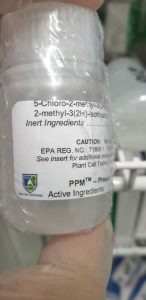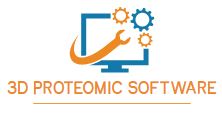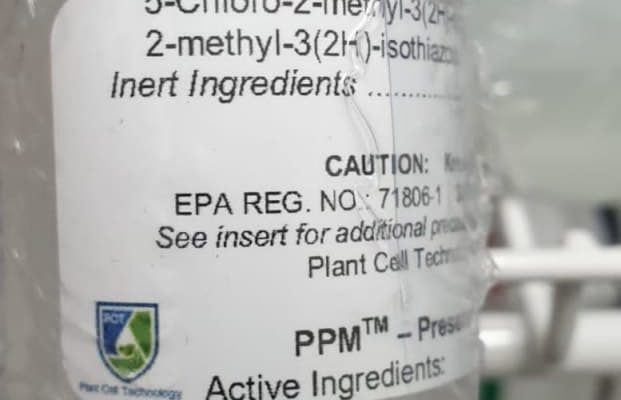Tandem mass spectrometry (MS/MS) is often used within the identification of peptides and proteins. Typical <em>proteomic</em> experiments depend on algorithms corresponding to SEQUEST and MASCOT to match hundreds of tandem mass spectra towards the theoretical fragment ion spectra of peptides in a database. The chances that these spectrum-to-sequence assignments are appropriate may be decided by statistical <em>software program</em> corresponding to PeptideProphet or by estimations based mostly on reverse or decoy databases. Nonetheless, most of the <em>software program</em> functions that assign possibilities for MS/MS spectra to sequence matches have been developed utilizing coaching knowledge units from <em>3D</em> ion-trap mass spectrometers.
Given the number of forms of mass spectrometers which have turn out to be commercially out there over the past 5 years, we sought to generate a knowledge set of reference knowledge protecting a number of instrumentation platforms to facilitate each the refinement of present computational approaches and the event of novel <em>software program</em> instruments. We analyzed the proteolytic peptides in a mix of tryptic digests of 18 proteins, named the “ISB commonplace protein combine”, utilizing eight completely different mass spectrometers. These embody linear and <em>3D</em> ion traps, two quadrupole time-of-flight platforms (qq-TOF), and two MALDI-TOF-TOF platforms. The ensuing knowledge set, which has been named the Commonplace Protein Combine Database, consists of over 1.1 million spectra in 150+ replicate runs on the mass spectrometers.
We have now developed a software program device known as MassSorter for administrating and analyzing knowledge from peptide mass fingerprinting experiments on proteins with recognized amino acid sequences. It’s meant for small scale mass spectrometry laboratories which can be occupied with posttranslational modifications of recognized proteins. A number of experiments may be in contrast concurrently, and the matched and unmatched peak values are clearly indicated. The hits may be sorted in accordance with m/z values (default) or in accordance with the sequence of the protein. Filters outlined by the consumer can mark autolytic protease peaks and different contaminating peaks (keratins, proteins co-migrating with the protein of curiosity, and so on.).
Comparative analysis of two two-dimensional gel electrophoresis picture evaluation software program functions utilizing synovial fluids from sufferers with joint illness.
The <em>proteomic</em> composition of synovial fluid (SF) might maintain clues to understanding the molecular foundation of arthritis. Nonetheless, the extremely viscous nature and <em>proteomic</em> complexity of SF current a problem when analyzing outcomes obtained by two-dimensional gel electrophoresis (2D-GE). A number of <em>software program</em> functions can be found for analyzing 2D-GE photos. Regardless of inherent strengths and weaknesses, no comparability between these functions has been reported utilizing SF or any human fluid specimens. We evaluated two widespread <em>software program</em> packages–PDQuest and Progenesis Workstation–for spot detection, matching, and quantitation of 2D-GE photos of SF from 4 sufferers with arthritic illness.
Initially, complete 2D-gel photos have been analyzed for spot detection, which recommended that PDQuest is extra constant than Progenesis; nevertheless, PDQuest appeared to require extra consumer intervention than Progenesis. Subsequently, two small areas (spots nicely resolved and spots not nicely resolved) have been chosen from every gel picture, which have been analyzed by the <em>software program</em> for spot detection, matching, quantity, and backbone. These analyses counsel that each instruments can quantify well-resolved spots comparatively constantly when put next with guide spot detection (the “gold commonplace”).
The “<em>3D</em> viewer” possibility supplied by each instruments permits appropriate spot identification and matching. The strengths and weaknesses of those laptop instruments can present steerage within the selection of a specific workstation for figuring out biomarkers of arthritis. Unmatched peaks may be additional analyzed for surprising modifications by searches towards a neighborhood model of the UniMod database. They will also be analyzed for surprising cleavages, a extremely helpful characteristic for proteins that bear maturation by proteolytic cleavage, creating new N- or C-terminals.
Complete understanding of organic techniques requires environment friendly and systematic assimilation of high-throughput datasets within the context of the present data base. A significant limitation within the area of <em>proteomics</em> is the dearth of an acceptable <em>software program</em> platform that may synthesize numerous experimental datasets within the context of the present data base. Right here, we describe a <em>software program</em> platform, termed PROTEOME-<em>3D</em>, that makes use of three important options for systematic evaluation of <em>proteomics</em> knowledge:
creation of a scalable, queryable, personalized database for recognized proteins from revealed literature; graphical instruments for displaying proteome landscapes and developments from a number of large-scale experiments; and interactive knowledge evaluation that facilitates identification of essential networks and pathways. Thus, PROTEOME-<em>3D</em> provides a standardized platform to research high-throughput experimental datasets for the identification of essential gamers in co-regulated pathways and mobile processes.

pdb-care (PDB carbohydrate residue verify): a program to help annotation of advanced carbohydrate buildings in PDB information.
Carbohydrates are concerned in quite a lot of basic organic processes and pathological conditions. They due to this fact have a big pharmaceutical and diagnostic potential. Information of the <em>3D</em> construction of glycans is a prerequisite for a whole understanding of their organic capabilities. The biggest supply of biomolecular <em>3D</em> buildings is the Protein Knowledge Financial institution. Nonetheless, about 30% of all 1663 PDB entries (model September 2003) containing carbohydrates comprise errors in glycan description. Sadly, no <em>software program</em> is at present out there which aligns the <em>3D</em> info with the reported assignments. It’s the intention of this work to fill this hole.
[Linking template=”default” type=”products” search=”magnetic beads proteomics C4″ header=”2″ limit=”146″ start=”1″ showCatalogNumber=”true” showSize=”true” showSupplier=”true” showPrice=”true” showDescription=”true” showAdditionalInformation=”true” showImage=”true” showSchemaMarkup=”true” imageWidth=”” imageHeight=””]
Trying up a translation desk the place systematic names and the respective PDB residue codes are listed, each assignments are in contrast and inconsistencies are reported. Moreover, the reliability of reported and calculated connectivities for molecules listed inside the HETATOM information is checked and strange values are reported.

